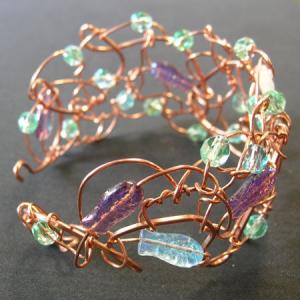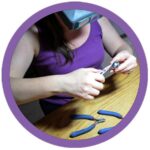One of the things I’ve been doing over the past two years is taking a real, critical look at my work. This is not an easy thing to do at any time, but any artist interested in growth has to be willing to go through the process of admitting what is good and what truly sucks.
So, my first step was to go through my stash and take much of it apart. I’m not planning on doing shows for the foreseeable future, so I have no need now to maintain the stock levels. Many of the pieces have also made the rounds through the galleries, so new work is needed. It’s painful, but also enlightening because I’m seeing the work with fresh eyes. I can see why some pieces didn’t sell. At the same time, I see the joy I had making them.
In the last five years I’ve devoted a lot of energy to my work on the Executive of the Metal Arts Guild of Canada. That served two purposes: it kept me connected to an artistic (and adult) community, which gave balance to my role as “Mommy” to two children, and it exposed me to a different kind of art jewelry, which has inspired me to step up my game.
The “500” series by Lark Books also continues to influence my thinking. Some of the stuff in these books is creative to the point of being impractical – but makes me want to explore, and push the limits of what I would consider “wearable” jewellery. In terms of finding a market for this kind of jewelry, the Americans tend to be much more open to it; Canadians have a tendency to be somewhat subdued and more practical, but I might find some surprises.
The price of precious metals is on my mind, and I’m thinking about how the economy will influence what kinds of jewellery will be of interest to the buying public. In other periods of economic turmoil, people used alternative materials (like Bakelite in the 1930s), or made lighter pieces.
In conjunction with my wire history research, I’ve been following the recent trends in wire jewelry. Coiling, weaving and solderless wrapped filigree have been very popular techniques for about the last 18 months. One of the other trends I’ve noticed is the addition of soldered or flame-worked wire elements to solderless wirework. I’m seeing balled ends on wire, and soldered wire frames used as a base upon which pieces are built. While eshewed by the purists (myself included), it has expanded the range of what can be done with wire and has received rave reviews from the wire jewelry community.
So… with all of these things in mind, here are my main objectives for My Year of Jewelry:
- Complete at least one piece every week, document the process through photographs and posts to this blog.
- Still work primarily in wire, but expand my repetoire by incorporating mixed media and soldered/flame-worked elements.
- Explore “haute couture” vs. “ready-to-wear” in my jewelry.
- Rediscover the joy and fun of making jewelry.
Here I go!

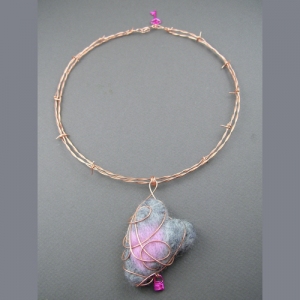
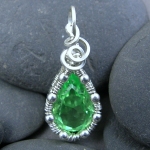
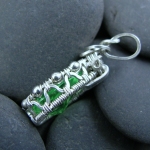
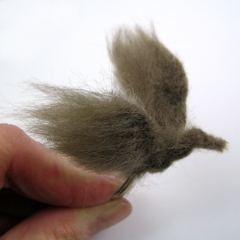
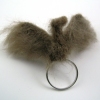
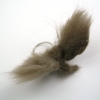
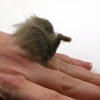
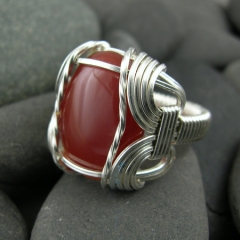
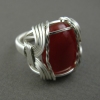
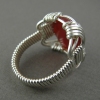
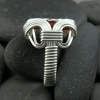
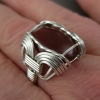
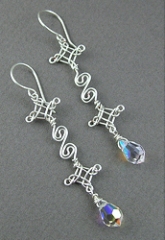
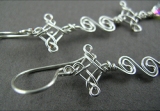
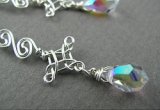
 QEW Earrings
QEW Earrings
 The “young-at-heart” gentleman who commissioned a
The “young-at-heart” gentleman who commissioned a 
